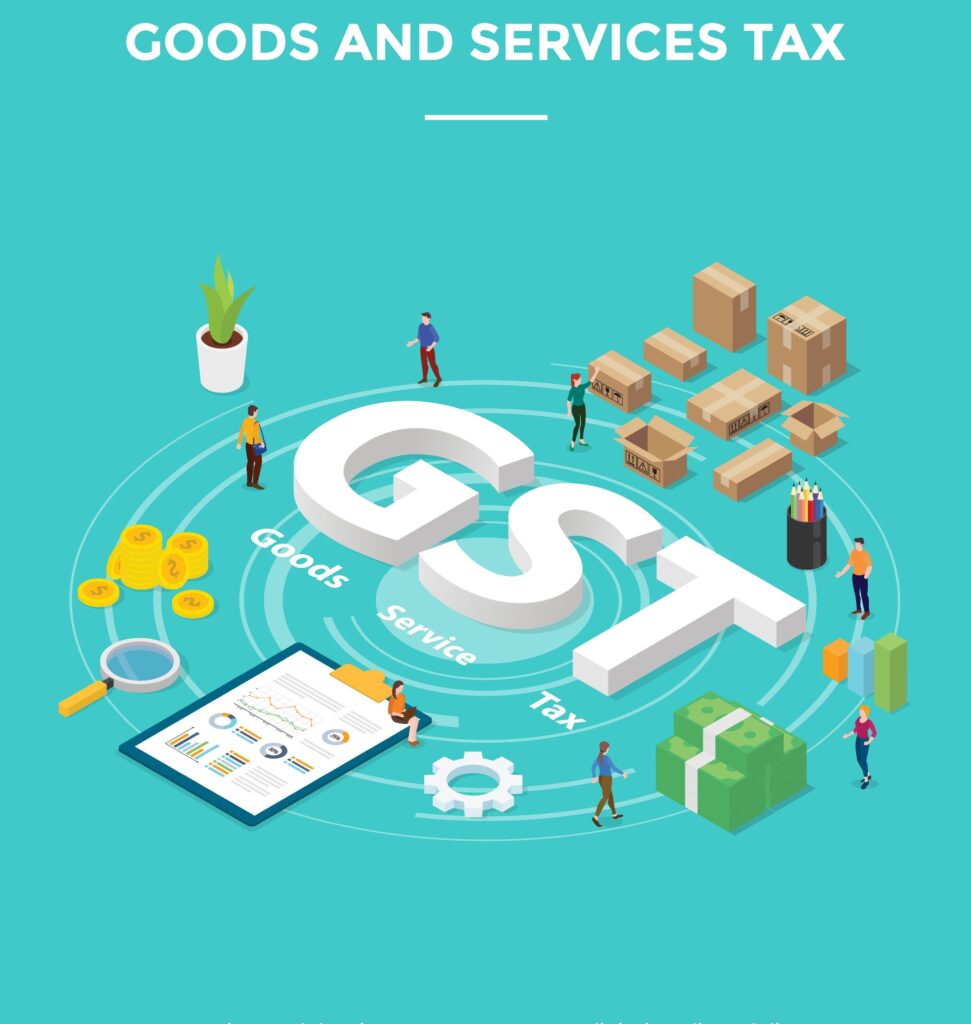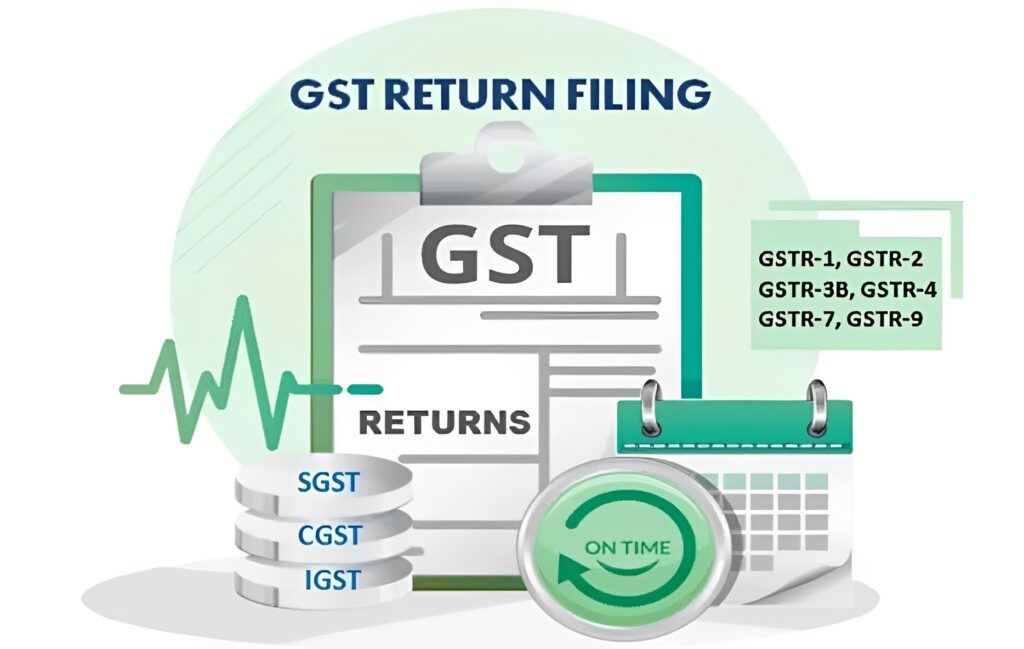GST Return Filing
All GST-registered organizations in India are required to file their GST returns on a monthly, quarterly, or annual basis, depending on how their business is conducted. While this requirement may seem overwhelming, it can be easy to navigate through the required processes with the online help of us’ GST professionals. The Indian government needs these returns to determine the country’s tax obligations, so taxpayers have to make sure they file their GST returns by the deadlines specified. With us, you can easily maintain compliance and streamline the filing of your GST returns.
File GST returns with Us now and keep your business ahead with ease!
What is GST Return?
A GST Return is a comprehensive document that documents every financial transaction made by an individual who is registered for GST, including both income and expenses. Every holder of a GSTIN is required to submit it to the tax authorities so that they can accurately calculate their net tax liability.
The GST return filing encompasses several critical elements:
Purchases:It records in detail the purchases the taxpayer has made.
Sales:It provides a comprehensive log of the taxpayer’s sales activities.
Output GST (On Sales):It notes the GST charged on the taxpayer’s sales.
Input Tax Credit (GST Paid on Purchases): It lists the GST paid on purchases, which is eligible to be deducted from the GST owed on sales.
For those seeking guidance on GST return filing or support with managing their GST compliance.
Who Should File GST Returns?
Each company or individual registered under the GST regime is required to file a GST return.This obligation applies to entities whose annual aggregate turnover surpasses the specified threshold, which is set by the tax authorities and may differ for various classifications of taxpayers, such as standard taxpayers and those opting for the composition scheme.
Who Should File GST Returns?
Each company or individual registered under the GST regime is required to file a GST return.This obligation applies to entities whose annual aggregate turnover surpasses the specified threshold, which is set by the tax authorities and may differ for various classifications of taxpayers, such as standard taxpayers and those opting for the composition scheme.


How Many Returns are there under GST?
How Many Returns are there under GST?
There are 13 returns under GST. They are the GSTR-1, GSTR-3B, GSTR-4, GSTR-5, GSTR-5A, GSTR-6, GSTR-7, GSTR-8, GSTR-9, GSTR-10, GSTR-11, CMP-08, and ITC-04. However, all returns do not apply to all taxpayers. Taxpayers file returns based on the type of taxpayer/type of registration obtained.
An overview of the 13 GST returns is provided below:
GSTR-1: Filed for disclosing details of outward supplies, essentially the sales.
GSTR-3B: A summarised return that outlines both sales and purchases, inclusive of tax payments.
GSTR-4: Applicable to those under the Composition Scheme, summarizing turnover and corresponding tax.
GSTR-5: For non-resident taxpayers conducting taxable transactions in India.
GSTR-5A: For providers of online information and database access or retrieval services.
GSTR-6: Used by Input Service Distributors for detailing input tax credit distribution.
GSTR-7: For entities required to deduct TDS under GST.
GSTR-8: To be filed by e-commerce operators reporting transactions on their platform.
GSTR-9: An annual comprehensive return summarizing all periodical filings over the fiscal year.
GSTR-10: The final return upon cancellation or surrender of GST registration.
GSTR-11: For those with a Unique Identity Number, claiming refunds on their purchases.
CMP-08: A quarterly statement for Composition Scheme taxpayers detailing tax liability.
ITC-04: For manufacturers to declare details about goods dispatched to and received from a job worker.
Additionally, there are return-related statements for input tax credits:
GSTR-2A (dynamic): Offers a real-time perspective of inward supplies as suppliers report. GSTR-2B (static): Provides a fixed snapshot of inward supplies based on the suppliers’ filings. For small taxpayers enrolled in the Quarterly Return Monthly Payment (QRMP) scheme, the Invoice Furnishing Facility (IFF) permits the declaration of B2B sales during the first two months of a quarter. Nonetheless, these taxpayers are obligated to remit taxes monthly using Form PMT-06.
GSTR-1 (Return for Outward Supplies)
GSTR-1 is the mandatory return for businesses to detail their outward supplies of goods and services. This encompasses all sales-related invoices and adjustment notes for the given tax period. Every regular taxpayer under GST, including those classified as casual taxable persons, is obligated to file GSTR-1.
GSTR-2A (Dynamic Read-Only Return)
GSTR-2A is a dynamic, read-only return for the recipients or purchasers of goods and services, capturing details of all incoming supplies from registered GST vendors within a tax period. The information in GSTR-2A is filled automatically from the GSTR-1 returns of suppliers and the Invoice Furnishing Facility (IFF) data for those in the QRMP scheme.
GSTR-2B (Static Read-Only Return)
Introduced in August 2020, GSTR-2B is a static read-only return that provides consistent ITC information sourced from the previous month’s GSTR-1 filings. It supports purchasers in matching their ITC claims for each tax period, advising on necessary actions for each listed invoice, including any need for reversals, ineligibility, or application of the reverse charge.
GSTR-2 (Deferred Return)
GSTR-2, an editable return, is presently deferred and was meant for registered purchasers to declare their inward supply of goods and services for a tax period. Initially planned to be auto-filled from GSTR-2A, its filing has been on hold since September 2017.
GSTR-3 (Deferred Return)
GSTR-3, a suspended monthly summary return for regular taxpayers, compiled concise figures of both outward and inward supplies, input tax credits, tax liabilities, and tax payments. It was automatically generated from GSTR-1 and GSTR-2 filings but has been deferred since September 2017.
GSTR-3B (Consolidated Return)
GSTR-3B, a monthly summary declaration for normal taxpayers, summarizes outward supplies, input tax credits, and tax dues. Before submitting GSTR-3B, it is critical to reconcile sales and ITC details with GSTR-1 and GSTR-2B records.
GSTR-4 (Return for Composition Scheme Taxpayers)
GSTR-4 is the yearly return for those under the Composition Scheme, due by April 30th of the subsequent financial year. GSTR-4 has replaced the prior quarterly submissions, with taxpayers now submitting a simplified challan via Form CMP-08 by the 18th following each quarter’s end
Under the Composition Scheme, businesses with goods turnover up to Rs. 1.5 crores may pay tax at a predetermined rate on their turnover. Service providers with a turnover of up to Rs. 50 lakh can opt for a similar benefit
GSTR-5 (Return for Non-Resident Foreign Taxpayers)
GSTR-5, required by non-resident foreign taxpayers engaged in business in India, details their outward and inward transactions, adjustments, tax liabilities, and payments, with submissions due by the 20th of each month
GSTR-5A (Return for OIDAR Service Providers)
GSTR-5A is the monthly summary for providers of Online Information and Database Access or Retrieval Services, due by the 20th of every month.
GSTR-6 (Return for Input Service Distributors)
Input Service Distributors must file GSTR-6 monthly, reporting the ITC received and allocated, including detailed documentation related to the distribution of credits, by the 13th of each month.
GSTR-7 (TDS Return)
Entities must deduct TDS under GST file GSTR-7 monthly, documenting TDS deducted, due and paid amounts, and any TDS refunds, with filings due by the 10th of the subsequent month.
GSTR-8 (Return for E-commerce Operators)
E-commerce operators under GST must submit GSTR-8 monthly, recording the supplies made and tax collected at source, due by the 10th of the following month.
GSTR-9 (Annual Return)
All GST-registered taxpayers must file GSTR-9 annually, summarizing their outward and inward supply details, taxes due, and paid. The due date is December 31st of the year after the
Apply Now!
Penalties of Non-Compliance
- The deadline for GST return filing online is the 20th of the month. There are strict laws under the GST Act for non-compliance with the Rules & Regulations.
- Penalty for Not Getting GST Registration, when a business is coming under the purview. The penalty is 100% of the tax amount if the offender has not filed for GST registration and intends to purposefully avoid it. The amount is the tax as applicable. Or Rs. 10,000, whichever is higher.
- A penalty of 100% tax due or Rs. 10,000, whichever is higher, is also applicable to those who choose Composition Scheme despite not being eligible to it.
- Any offender not paying his due tax or making short payments (genuine errors) is liable to pay a penalty of 10% of the tax amount. This amount cannot be less than Rs 10,000.
- A person guilty of not providing the GST invoice is liable to be charged 100% tax due or Rs. 10,000. Whichever is higher.
- An offender will be charged a fine of Rs. 25,000 for incorrect invoicing for not having GST return filing online.
- If a person has not filed for unpaid tax, there is a penalty of Rs. 50 per day. Rs. 20 per day if he was to file for NIL returns. And the maximum amount must not exceed Rs. 5,000.
- There is also a provision of the penalty by a jail term for tax offenders to commit fraud.